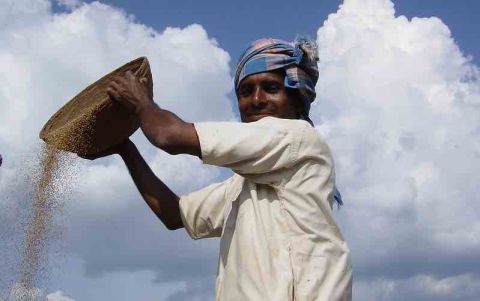Expanding underutilized crops in Asia: The promise of millets for improving nutrition and sustainability
- From
-
Published on
26.01.24
- Impact Area

Asia is home to 55% of the people in the world affected by hunger—more than 400 million—and faces continuing threats to food security. The crises of recent years—including the COVID-19 pandemic, the Russia-Ukraine war, and climate-related shocks—have disrupted Asia’s food supply chains as they have around the world. Currently, rising temperatures, unpredictable weather patterns, and floods pose threats to the production of rice and wheat, key staple crops in the region.
Given the continuing food and nutrition insecurity facing the developing world and the broader need for food system transformation, it’s essential to improve food and nutrition security, livelihood opportunities, climate resiliency, and inclusivity. One promising approach for Asia (and elsewhere) is expanding the cultivation and consumption of underutilized crops. These can play a key role in sustainable food systems—yet awareness of them remains low among consumers, producers, and policymakers.
Related news
-

Accelerating wheat breeding, from Toluca in Mexico to the world
CGIAR Initiative on Breeding Resources12.11.25-
Climate adaptation & mitigation
-
Nutrition, health & food security
In Mexico, a project has been completed to develop new elite parental lines of wheat…
Read more -
-

Next-gen rice lines top check varieties at 7.5 t/ha in ESA
International Rice Research Institute (IRRI)11.11.25-
Food security
MOROGORO, Tanzania (8 October 2025) — Elite rice lines are outperforming the current popular varie…
Read more -
-

QTL Profiling Now Live on EBS
International Rice Research Institute (IRRI)11.11.25-
Food security
QTL profiling is now integrated into the EBS Platform’s MDA module. Teams across CGIAR research…
Read more -
